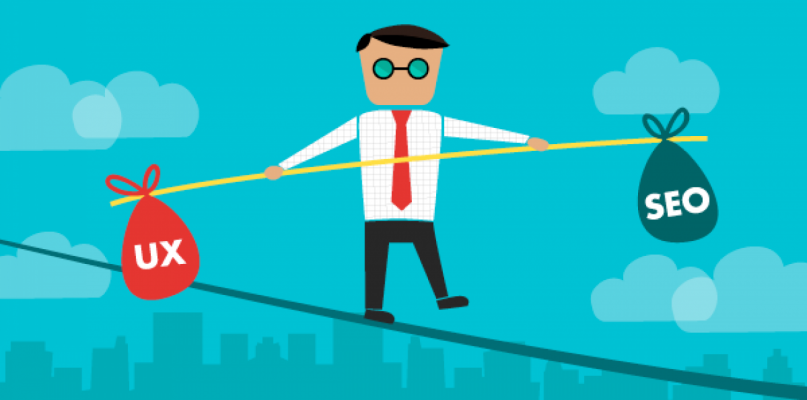
Balancing User Experience and SEO during website designing
“Focus on the user, and else will follow”, said Google. This advice emerges as an essential guide as we brainstorm possible ways to balance between SEO and user experience.
While SEO has been for years treated as the key aspect in terms of digital marketing, the stress on user experience has apparently been overlooked. But with time, demands and priority have also changed. Search engines revived their optimization strategy, bringing a major transformation in the field of digital marketing. Gradually the focus shifted from SEO to UX, as ultimately it’s the user to whom the site serves. Until and unless a site provides the user the best experience alongside appropriate information, it is tough to survive in the market.
So, as we look forward to bring in balance between SEO and UX, we must abide by some key points to fulfil our goal.
User over optimization: In the very first step we should understand and acknowledge our top priority. What else it could be other than the users themselves. Their experience and demand should be our prime agenda to fulfil, and the optimization will accordingly fall in place. Once your site grabs the attention of the user, the optimization will automatically pick up. However, the importance of SEO is not negligible as there are some UX elements that affect search engine’s ability to crawl a website.
Mobile friendly: This is a crucial transition period in the era of digitization, where the entire world is working aggressively to create a breakthrough in the path of digitization. Embracing the new and latest is always crucial for a digital platform to stay. The entire digital world is abuzz with ‘going mobile’. Hence, to live up to that expectation we need to design a website that is mobile-friendly making information accessible through mobile phone.
Responsive web design: Talking in the line of ‘mobile-friendly’ designs, we must strategize a design concept that just not only appears appealing but also provides the required information unabatedly. When a user land into a site, he looks for a smooth and fast experience, which if met, you win your viewer’s attention and trust. The responsive design concept has become essential as it works well for both SEO and UX. With this design concept a site can serve for different displays according to the device.
Navigation: Aim to keep your navigation as simple and smooth as possible. The user will always look for a site where they are able to navigate freely and smoothly from one page to another. Besides, inclusion of many pages for one subject can be distracting. Avoid breaking content through many pages and instead try to put required fields on one page.
Visual elements: Although visual elements, including still-images, videos, memes, etc are important alongside written content, however knowing proper usage of them is crucial. You must choose and design your visual contents according to requirements. Your visuals can result in negative if not placed or aligned properly. Also, image-heavy pages may take unnecessarily more time in opening. Hence, the right incorporation of visual elements and text is important.
Scrolling experience: Lately, the infinite scrolling option gained a lot of attention with people largely using this feature. However, experts believe that there are some negative impacts of this feature as well. The infinite scrolling will allow user to view content that may not be visible to search engine. Also it slows down the entire page performance. So if you are customizing the feature as a design element then it’s better to take professional guide to incorporate features so that it doesn’t impact otherwise.
Sources: SEO and Web design company




